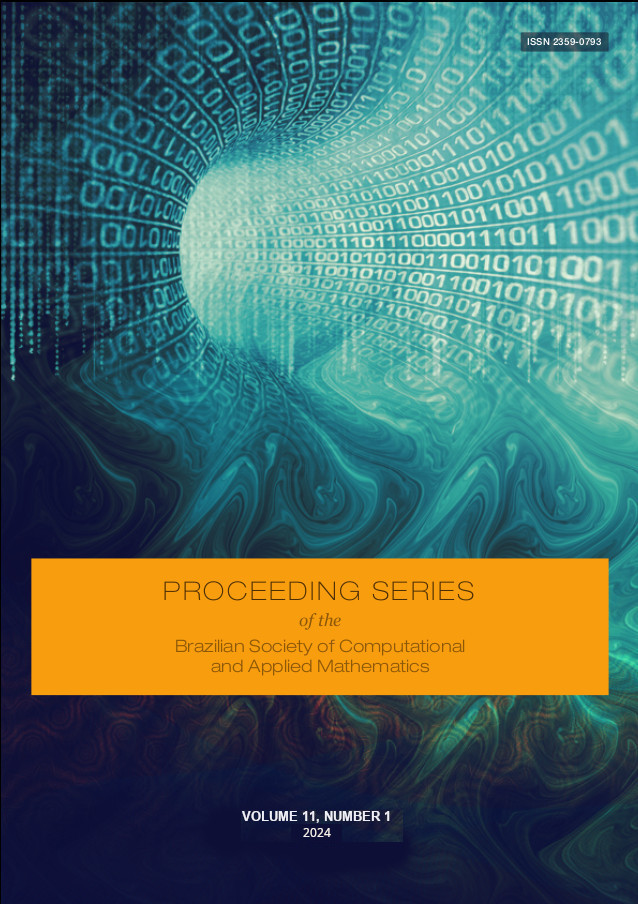Um bloco de permutação para construções esponja
baseado na transformada do cosseno sobre corpos finitos de característica dois
DOI:
https://doi.org/10.5540/03.2025.011.01.0492Keywords:
Construção Esponja, Corpos Finitos de Característica 2, Hash, Permutação, Transformada do Cosseno Sobre Corpos FinitosAbstract
Neste trabalho, é proposto um novo bloco de permutação de comprimento (2 + n)× 32, em que n é um número natural positivo, para utilização em construções esponja. Este bloco de permutação emprega um polinômio de permutação juntamente com a transformada do cosseno do tipo 1, ambos definidos sobre o corpo finito F28. Quando utilizado em algoritmos hash que empregam construções esponja, o bloco proposto torna possível reduzir o número de rodadas de aplicação do bloco de permutação para dois em todos os algoritmos hash testados.
Downloads
References
Amir Akbary, Dragos Ghioca e Qiang Wang. “On constructing permutations of finite fields”. Em: Finite Fields Appl. 17.1 (2011), pp. 51–67. issn: 1071-5797.
M. Alawida, A. Samsudin, N. Alajarmeh, J. S. Teh, M. Ahmad e W. H. Alshoura. “A Novel Hash Function Based on a Chaotic Sponge and DNA Sequence”. Em: IEEE Access 9 (2021), pp. 17882–17897.
A. Alfrhan, T. Moulahi e A. Alabdulatif. “Comparative study on hash functions for lightweight blockchain in Internet of Things (IoT)”. Em: Blockchain: Research and Applications 2.4 (2021), p. 100036. issn: 2096-7209.
R. AlTawy, Raghvendra Rohit, Morgan He, Kalikinkar Mandal, Gangqiang Yang e Guang Gong. “Towards a Cryptographic Minimal Design: The sLiSCP Family of Permutations”. Em: IEEE Trans. Comput. 67.9 (2018), pp. 1341–1358.
NRDP Astuti, I Arfiani e E Aribowo. “Analysis of the security level of modified CBC algorithm cryptography using avalanche effect”. Em: IOP Conference Series: Materials Science and Engineering. Vol. 674. 1. IOP Publishing. 2019, p. 012056.
G. Bertoni, J. Daemen, M. Peeters e G. Van Assche. “Duplexing the Sponge: Single-Pass Authenticated Encryption and Other Applications”. Em: Selected Areas in Cryptography. Springer Berlin Heidelberg, 2012, pp. 320–337.
G. Bertoni, J. Daemen, M. Peeters e G. Van Assche. “Sponge functions”. Em: ECRYPT hash workshop. Vol. 2007. 9. 2007.
J. R. de Oliveira Neto, J. B. Lima e D. Panario. “The Design of a Novel Multiple-Parameter Fractional Number-Theoretic Transform and Its Application to Image Encryption”. Em: IEEE Trans. Circuits Syst. Video Technol. 30.8 (2020), pp. 2489–2502.
C. Dobraunig, M. Eichlseder, F. Mendel e M. Schläffer. “Ascon v1.2: Lightweight Authenticated Encryption and Hashing”. Em: Journal of Cryptology 34.3 (jun. de 2021).
C. Douligeris e D. N. Serpanos. “Appendix A: Cryptography Primer: Introduction to Cryptographic Principles and Algorithms”. Em: Network Security: Current Status and Future Directions. 2007, pp. 459–479.
Maria E., Vladimir V. e Armando F. Python implementation of Ascon. https://github.com/meichlseder/pyascon. 2023.
V. A. Gilles. XKCP: eXtended Keccak Code Package. https://github.com/XKCP/XKCP. 2024.
M. A. Jimale, M. R. Z’aba, M. L. B. M. Kiah, M. Y. I. Idris, N. Jamil, M. S. Mohamad e M. S. Rohmad. “Parallel Sponge-Based Authenticated Encryption With Side-Channel Protection and Adversary-Invisible Nonces”. Em: IEEE Access 10 (2022), pp. 50819–50838.
J. B. Lima, M. Barone e R. M. Campello de Souza. “Cosine transforms over fields of characteristic 2”. Em: Finite Fields Appl. 37 (2016), pp. 265–284. issn: 1071-5797.
J. B. Lima, Edmar S. da Silva e R.M. Campello de Souza. “Cosine transforms over fields of characteristic 2: fast computation and application to image encryption”. Em: Signal Process. Image Commun. 54 (2017), pp. 130–139.
V.S. Lima, F. Madeiro e J. B. Lima. “Encryption of 3D medical images based on a novel multiparameter cosine number transform”. Em: Comput. Biol. Med. 121 (2020), p. 103772.
A. Maetouq e S. M. Daud. “HMNT: Hash Function Based on New Mersenne Number Transform”. Em: IEEE Access 8 (2020), pp. 80395–80407.
N. Nabeel, M. H. Habaebi e M. D. R. Islam. “Security Analysis of LNMNT-LightWeight Crypto Hash Function for IoT”. Em: IEEE Access 9 (2021), pp. 165754–165765.
T. Niu, K. Li, L. Qu e W. Qiang. “New constructions of involutions over finite fields”. Em: Cryptogr. Commun. 12 (mar. de 2020), pp. 165–185.
A. Pedrouzo-Ulloa, J. R. Troncoso-Pastoriza e F. Pérez-González. “Number Theoretic Transforms for Secure Signal Processing”. Em: IEEE Trans. Inf. Forensics Secur. 12.5 (mai. de 2017), pp. 1125–1140.
J. M. Pollard. “The fast Fourier transform in a finite field”. Em: Math. Comput. 25.114 (abr. de 1971), pp. 365–374.
Joost R. Readable-crypto. https://github.com/joostrijneveld/readable-crypto. 2014.
I Reed e Treiu-Kien Truong. “The use of finite fields to compute convolutions”. Em: IEEE Trans. Inf. Theory 21.2 (1975), pp. 208–213.
Ayoub S. QuarkPython. https://github.com/ayoubSoussi/QuarkPython. 2020.
W. Stallings. Pearson etext cryptography and network security. 8ª ed. Pearson, 2019.
H. C. A. Van Tilborg e S. Jajodia. Encyclopedia of Cryptography and Security. 2ª ed. Germany: Springer, 2011. isbn: 978-1-44195905-8.
S. Windarta, S. Suryadi, K. Ramli, A. A. Lestari, W. Wildan, B. Pranggono e R. W. Wardhani. “Two New Lightweight Cryptographic Hash Functions Based on Saturnin and Beetle for the Internet of Things”. Em: IEEE Access 11 (2023), pp. 84074–84090.
A. M. Youssef, S. E. Tavares e H. M. Heys. “A new class of substitution-permutation networks”. Em: Workshop on Selected Areas in Cryptography, SAC. Vol. 96. 1996, pp. 132–147.

